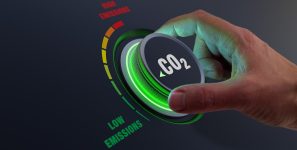The State of Renewable Energy
Last year was a record year for renewable energy installations. Renewable power generating capacity saw its largest increase ever, with an estimated 147 gigawatts (GW) added. Modern renewable heat capacity also continued to rise, and renewables use expanded in the transportation sector. Distributed renewable energy is advancing rapidly to close the gap between the energy haves and have nots.
These results, disclosed in the Renewables 2016 Global Status Report by REN21 were driven by several factors. First, renewables are now cost competitive with fossil fuels in many markets. Government leadership plays a key role in driving the growth of renewables, particularly wind and solar, in the power sector. As of early 2016, 173 countries had renewable energy targets in place and 146 countries had support policies.
Additional growth factors include better access to financing, concerns about energy security and the environment and the growing demand for modern energy services in developing and emerging economies.
“What is truly remarkable about these results is that they were achieved at a time when fossil fuel prices were at historic lows, and renewables remained at a significant disadvantage in terms of government subsidies,” said Christine Lins, executive secretary of REN21. “For every dollar spent boosting renewables, nearly four dollars were spent to maintain our dependence on fossil fuels.”
Last year was also a record year for investment, reaching $286 billion worldwide in renewable power and fuels. With China accounting for more than one third of the global total, developing countries surpassed developed countries in total renewable energy investments for the first time.
With increased investment came an increase in technological advances, cost reductions and jobs. There are now 8.1 million people working in the renewable energy sector.
While trends are generally positive, the report highlights several challenges that remain to be addressed if governments are to fulfill their commitments to achieve a global transition away from fossil fuels. These include: achieving effective integration of high shares of renewables into the grid and addressing policy and political instability, regulatory barriers, and fiscal constraints. There is far less policy focus on transportation and, particularly, heating and cooling, so these sectors are progressing much more slowly.
“To accelerate the transition to a healthier, more-secure and climate-safe future, we need to build the equivalent of a high-speed rail network,” said Arthouros Zervos, Chair of REN21, “a smarter, more flexible system that maximizes the use of variable sources of renewable energy, and accommodates decentralized and community-based generation.”





Leave a Reply